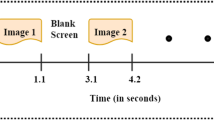Abstract
Lie detection identification has become a significant concern with the rising crime rate. It is a growing research field that is critical in real-time applications. Recognizing lies is an essential technique in human-computer interaction. The primary job is to determine whether the EEG data gathered for the lie detection is guilty or innocent. This paper proposes that EEG channels data for the human brain learn from EEG signals. The 16-channel electrode for the human brain to capture EEG channels data from the concealed information test. EEG channel imbalanced data handled with the SMOTE technique and machine learning methods will aid in the analysis of large amounts of data to lie detection. This system used the SMOTE method to remove the imbalanced EEG channel data set. These balanced data sets are trained to lie detection and increase system performance using several classifiers such as the KKN, DT, LR, RM, and SVM approaches. This algorithm compares performance parameters such as accuracy, F1 score, specificity, precision, and sensitivity. According to the trial outcomes, the SVM technique achieves the most incredible accuracy of 98.3% on the EEG data set.
Access this chapter
Tax calculation will be finalised at checkout
Purchases are for personal use only
Similar content being viewed by others
References
Bablani A, Edla DR, Tripathi D, Cheruku R (2019) Survey on brain-computer interface: an emerging computational intelligence paradigm. ACM Comput Surv (CSUR) 52(1):1–32
Farwell LA, Donchin E (1991) The truth will out: Interrogative polygraphy (‘lie detection’) with event-related brain potentials. Psychophysiology 28(5):531–547
Ramadan RA, Vasilakos AV (2017) Brain computer interface: control signals review. Neurocomputing 223:26–44
Farwell LA, Donchin E (1991) The truth will out: interrogative polygraphy (‘lie detection’) with event-related brain potentials. Psychophysiology 28(5):531–547
Rosenfeld JP, Soskins M, Bosh G, Ryan A (2004) Simple, effective countermeasures to P300-based tests of detection of concealed information. Psychophysiology 41:205–219
Rosenfeld JP, Labkovsky E, Winograd M, Lui MA, Vandenboom C, Chedid E (2008) The Complex Trial Protocol (CTP): a new, countermeasure-resistant, accurate, P300-based method for detection of concealed information. Psychophysiology 45(6):906–919
Bablani A, Edla DR, Tripathi D, Kuppili V (2019) An efficient concealed information test: EEG feature extraction and ensemble classification for lie identification. Mach Vis Appl 30(5):813–32
Moradi AMH, Janghorbani A (2016) A novel method based on empirical mode decomposition for P300-based detection of deception. IEEE Trans Inf Forensics Secur 11(11):2584–2593
Farahani ED, Moradi MH (2017) Multimodal detection of concealed information using genetic-SVM classifier with strict validation structure. Inform Med Unlocked 9:58–67
Luo X, Lin F, Chen Y, Zhu S, Xu Z, Huo Z, Yu M, Peng J (2019) Coupling logistic model tree and random subspace to predict the landslide susceptibility areas with considering the uncertainty of environmental features. Sci Rep 9(1):1–13
Cover T, Hart P (1967) Nearest neighbor pattern classification. IEEE Trans Inf Theor 13(1):21–27
Dasarathy BV (1991) Nearest neighbor (NN) norms: NN pattern classification techniques. IEEE Comput Soc Tutorial 10012834200
Raviya KH, Gajjar B (2013) Performance Evaluation of different data mining classification algorithm using WEKA. Indian J Res 2(1):19–21
Kotsiantis SB, Zaharakis I, Pintelas P (2007) Supervised machine learning: a review of classification techniques. Emerg Artif Intell Appl Comput Eng 160:3–24
De Mantaras RL, Armengol E (1998) Machine learning from examples: inductive and Lazy methods. Data Knowl Eng 25(1–2):99–123
Jain H, Yadav G, Manoov R (2021) Churn prediction and retention in banking, telecom and IT sectors using machine learning techniques. In: Advances in machine learning and computational intelligence, pp 137–156. Springer, Singapore
Quinlan JR (1986) Induction of decision trees. Mach Learn 81–106
Cruz JA, Wishart DS (2006) Applications of machine learning in cancer prediction and prognosis. Cancer Inform 2:117693510600200030
Hosmer Jr DW, Lemeshow S, Sturdivant RX (2013) Applied logistic regression, vol 398. Wiley
Dreiseitl S, Ohno-Machado L (2002) Logistic regression and artificial neural network classification models: a methodology review. J Biomed Inf 35(5–6):352–359
Breiman L (2001) Random forests. Mach Learn 45(1):5–32
Hasan SMM, Mamun MA, Uddin MP, Hossain MA (2018) Comparative analysis of classification approaches for heart disease prediction. In: 2018 international conference on computer, communication, chemical, material and electronic engineering (IC4ME2), IEEE, pp 1–4
Quinlan JR (1986) Induction of decision trees. Mach Learn 81–106
Blagus R, Lusa L (2015) Joint use of over- and under-sampling techniques and cross-validation for the development and assessment of prediction models. BMC Bioinf 16(1):1–10
Chawla NV (2009) Data mining for imbalanced datasets: an overview. In: Data mining and knowledge discovery handbook. Springer, pp 875–886
Lim T-S, Loh W-Y, Shih Y-S (2000) A comparison of prediction accuracy, complexity, and training time of thirty-three old and new classification algorithms. Mach Learn 40(3):203–228
Hay AM (1988) The derivation of global estimates from a confusion matrix. Int J Remote Sens 9(8):1395–1398
Abootalebi V, Moradi MH, Khalilzadeh MA (2009) A new approach for EEG feature extraction in P300-based lie detection. Comput Methods Programs Biomed 94(1):48–57
Svojanovsky (2017) Brain products. Accessed: 15, 2017. http://www.brainproducts.com/
Dodia S, Edla DR, Bablani A, Cheruku R (2020) Lie detection using extreme learning machine: a concealed information test based on short-time Fourier transform and binary bat optimization using a novel fitness function. Comput Intell 36(2):637–658
Author information
Authors and Affiliations
Corresponding author
Editor information
Editors and Affiliations
Rights and permissions
Copyright information
© 2023 The Author(s), under exclusive license to Springer Nature Singapore Pte Ltd.
About this paper
Cite this paper
Ramesh, M., Edla, D.R. (2023). Lie Detection with the SMOTE Technique and Supervised Machine Learning Algorithms. In: Singh, P., Singh, D., Tiwari, V., Misra, S. (eds) Machine Learning and Computational Intelligence Techniques for Data Engineering. MISP 2022. Lecture Notes in Electrical Engineering, vol 998. Springer, Singapore. https://doi.org/10.1007/978-981-99-0047-3_74
Download citation
DOI: https://doi.org/10.1007/978-981-99-0047-3_74
Published:
Publisher Name: Springer, Singapore
Print ISBN: 978-981-99-0046-6
Online ISBN: 978-981-99-0047-3
eBook Packages: Intelligent Technologies and RoboticsIntelligent Technologies and Robotics (R0)




